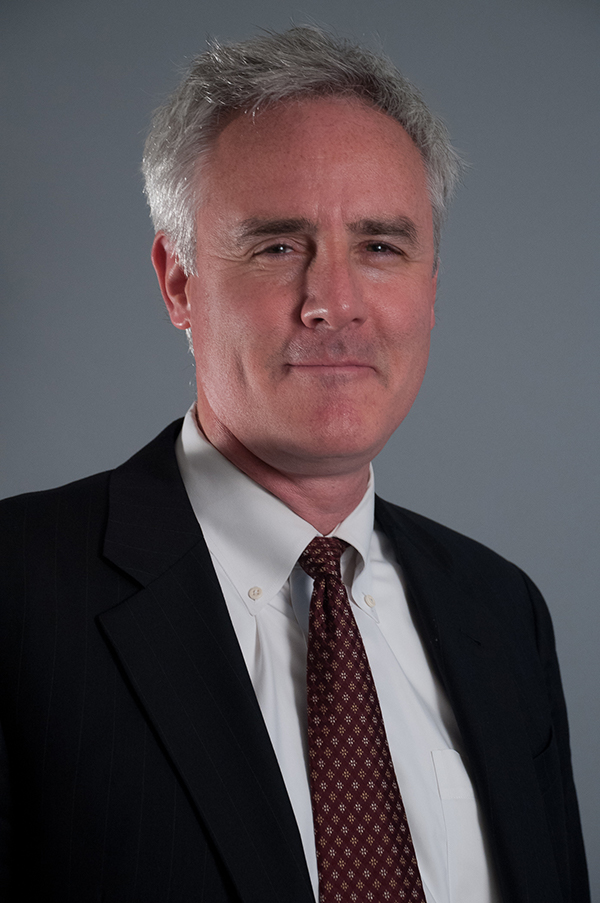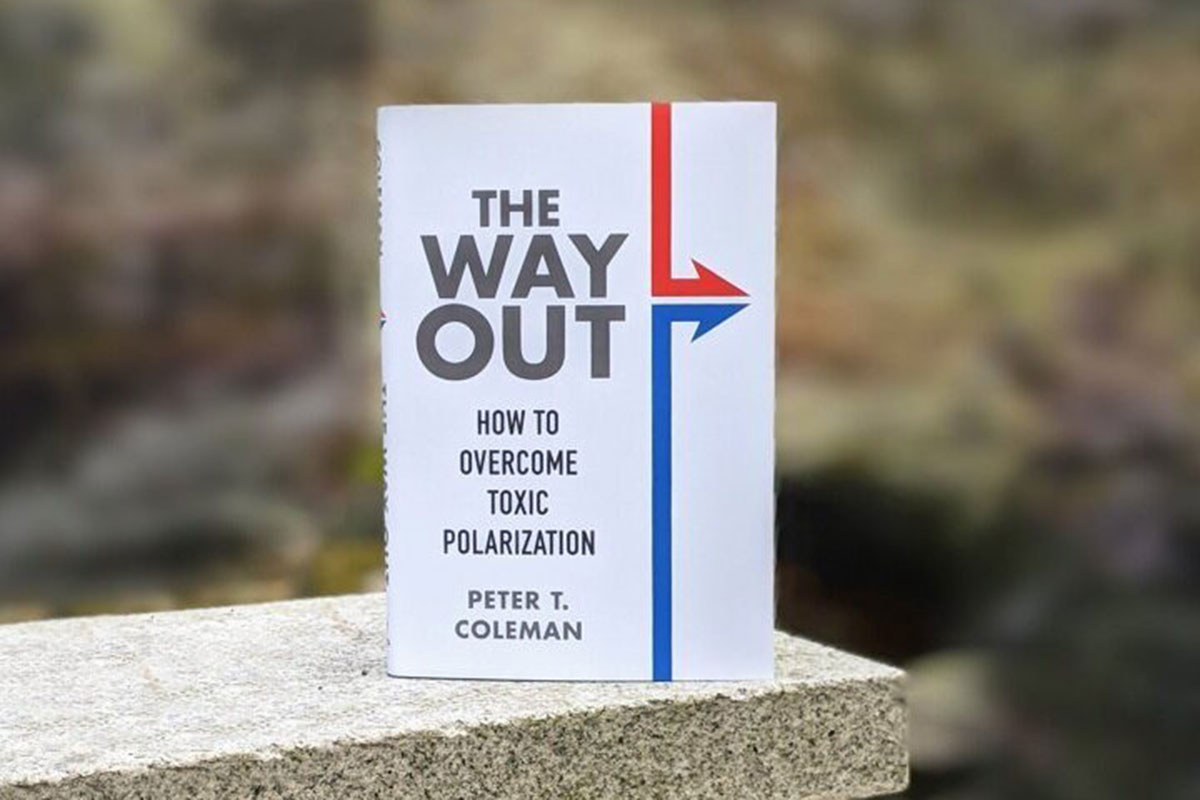Polarization in society is not necessarily a bad thing, argues TC’s Peter Coleman, Professor of Psychology and Education. Especially in a two-party political system, some level of differentiation of social and cultural stances contributes to the checks and balances that keep the whole edifice intact.
But when a society reaches the stage where it has essentially divided into two tribes that view one another with contempt, draw on entirely different sources of information and ideas, and see no worth in listening and engaging across the divide, then polarization has morphed into a more total phenomenon — one that is plainly destructive.
Our eyes aren’t deceiving us: While partisanship and bitterness have long been factors in American political and social life, surging at various points in history, things have gotten much worse in recent decades — achieving a kind of grotesque pinnacle in the Trump years, perhaps, but in a process that has grown in momentum, Coleman argues, since the late 1960s.

PEACE MAKER As director of the College’s Morton Deutsch International Center for Cooperation and Conflict Resolution, Peter Coleman examines the conditions under which divisions — and healing — manifest and thrive. (Photo: TC Archives)
“As a psychologist,” Coleman writes in his new book The Way Out: How to Overcome Toxic Polarization, “I am aware that psychosis is a strong word.” So it is with a clinician’s precision and care that he assesses the United States today as a “psychotic nation” in which parallel and conflicting realities have taken hold, making it “increasingly impossible to communicate, work together, and solve real problems.” He lays out the stakes: “Our divisions are a first-order problem; they impair our capacities to problem solve as a society.”
The costs are everywhere — in policy deadlock, in race relations, in destructive animosity at the level of cities, communities, even within households and families. There are also entities that benefit, Coleman is well aware — notably the media and social-media companies whose platforms and content shape and stoke the parallel realities.
But as the title of Coleman’s new book makes clear, the crisis is not terminal. For over a decade, as the broader discourse has worsened, Coleman, an acclaimed specialist in peace building who directs TC’s Morton Deutsch International Center for Cooperation and Conflict Resolution (MD-ICCCR), has worked with colleagues to ground the understanding of the crisis in science, understand what has worked and not worked in attempts to lead communities out of standoffs, and experiment in research settings such as the center’s Difficult Conversations Laboratory.
“Seemingly unchangeable patterns can and do, in fact, change,” Coleman writes. In The Way Out, which seeks to convey insight from multiple disciplines in a direct style, he offers practical steps for individuals to do their small part in the national re-orientation, but also insight for identifying productive group efforts already under way that they can join.
In a recent book talk held on Zoom, Coleman put up a chart listing dozens specific factors that emerge from research to explain political polarization — some at the level of individuals (for instance, partisan differences in the relation to authority; the rise of loneliness and alienation; reliance on stereotypes under high cognitive demand) and some at the level of society (for instance demographic shifts; rising inequality; Internet algorithms).
Each of these many factors, he said, can be clearly shown to contribute to the crisis. And yet, the crisis is greater than any of these drivers — it resides in the way they have combined and continually reinforce each other. The result, he said, drawing on a concept from Karl Popper, is a “cloud problem,” as opposed to a “clock problem” that is addressable in a mechanical way.
“When complex systems like this settle into patterns they become change resistant,” Coleman said. “And when they do change, they do in unpredictable and strange ways.” In the meantime, the pattern of polarization is continually reinforced by the role of attractors — the insidious and addictive effect that creates pleasure, a kind of brain reward for certainty and outrage.
When complex systems like this settle into patterns they become change resistant. And when they do change, they do in unpredictable and strange ways.
— Peter Coleman, Professor of Psychology and Education
Yet crisis also contains opportunity, and not just as a kind of folk saying.
In fact, Coleman said, research makes clear that complex social systems can change when there is a large enough quorum of citizens who are “fed up and wanting change” — what he calls the “miserable middle majority;” when society has undergone a significant destabilization; and when people can see a way out. The two first conditions, Coleman argued, are largely in place in a post-Trump America freshly rocked by a pandemic and a major racial-justice reckoning. Helping bring about the third variable needed for resolution is the purpose of his book.
The central chapters of Coleman’s book take readers on a fairly dazzling, but always conversationally led, tour of research in multiple disciplines and practical cases of conflict entrenched and overcome, both in the United States and internationally, encompassing, for instance, research on Hindu-Muslim urban conflict in India (hint: don’t forget to analyze the cities where peace has prevailed) or the journey out of the famously hostile Westboro Baptist Church by one of the members of its central family. He makes it personal, too, sharing his own learning to think about his position and those of others in settings such as faculty committees.
The great wealth of research and case stories bolster six connected ways of thinking and acting in which Coleman urges us all to consider investing ourselves. Each has its chapter, from “Think Different — Change Your Theory of Change” to “Adapt — Seek Evolution for Revolution,” with calls to “Reset,” “Bolster and Break,” “Complicate,” and “Move” along the way.
A helpful appendix summarizes in bullet-point form each chapter’s takeaways. And the book’s associated website offers yet another way into the material with its collection of insightful case studies and even, for each chapter, suggested exercises.
In his book talk, Coleman stressed the promise of the current moment, but also the danger.
“We are in a very opportune window right now,” he said. “The ground is fertile to bring the guardrails back in, but it’s not something that will happen automatically.” Political shock creates a moment for change, but if not captured, “things can get much worse.”
It’s all too easy to caricature or shrug off the potential of reaching across the divide, but Coleman pointed out that only underscores the problem. In The Way Out, he hopes to offer tools so that those exercises — which he admits, citing examples, have often seemed futile or backfired — can deliver.
The fields he holds dear, peace-building and social justice, “are often in tension,” Coleman admitted. But in fact, he argued, they must continually learn from each other — for at root they are inseparable if either is to succeed.
